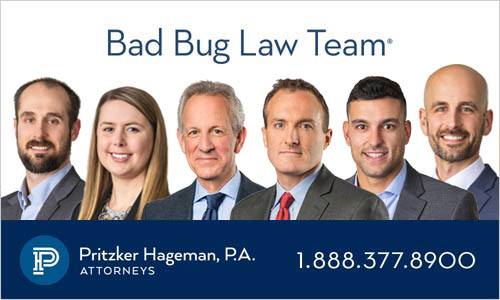In the Pure Eire yogurt E. coli outbreak that has sickened at least 16 people in Washington and Arizona, some of the patients have contracted secondary food poisoning infections. This term may not be familiar to everyone. So what is this type of infection?

A secondary food poisoning infection occurs when someone gets sick from contact with another person, not by eating contaminated food or drinking contaminated water. Many pathogens can be spread person-to-person, by direct contact and common contact with fomites (surfaces), both through the fecal-oral route.
In the Pure Eire yogurt E. coli outbreak, for instance, two children in Arizona are sick with the outbreak strain, but neither consumed the recalled yogurt. Instead, they contracted this infection after having close contact with a Washington state resident who regularly ate the yogurt and developed diarrhea before traveling to Arizona. These cases have been lab confirmed and are genetically linked.
Pathogens that can spread person-to-person include Salmonella, E. coli, Listeria monocytogenes, norovirus, Campylobacter, Clostridium perfringens, hepatitis A, Shigella, Yersinia, Vibrio, and Staphylococcus aureus. Cyclospora is one of the few pathogens that does not spread person-to-person.
Direct contact may occur through hugging or kissing, handshaking, or using utensils in common. Contact through fomites can occur when an infected person doesn’t wash their hands after using the bathroom, then touches a surface. When another person touches that surface and then touches their mouth or eats without washing their hands, they can get sick. Both of these methods of transmission use the fecal-oral route, that is, tiny amounts of contaminated fecal matter are ingested.
The best way to stop this type of infection is to wash your hands thoroughly with soap and water after using the bathroom and before eating or preparing food for others. If you are sick, especially with an illness characterized by diarrhea or vomiting, stay away from others and do not enter the kitchen until at least 24 hours after your symptoms end. And if someone in your household is sick with diarrhea or vomiting, isolate them and wash your hands thoroughly after caring for them.
Symptoms of an E. coli infection include a mild fever, nausea and vomiting, severe and painful abdominal cramps, and diarrhea that can be bloody. A serious complication of this infection typically affects children under the age of five: hemolytic uremic syndrome, which is a type of kidney failure. Four people in the Pure Eire yogurt outbreak have developed HUS. Symptoms of HUS include little or no urine output, lethargy, pale skin, easy bruising, and a skin rash.

If you or a loved one have been sickened with an E. coli infection after eating recalled Pure Eire yogurt, please contact our experienced lawyers for help at 1-888-377-8900 or 612-338-0202.




